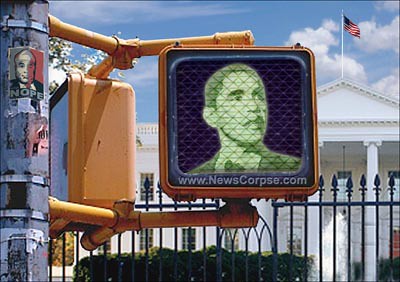 Continuing with thoughts around Social Media, The Elections, & What It Means For Marketing, here follows Part II.
Continuing with thoughts around Social Media, The Elections, & What It Means For Marketing, here follows Part II.Here are my takeaways from the event:
What makes the use of social media unprecedented in this election process is that the efforts connect with individuals on a personal level. "People don't do this in a passive way," says Howard. They choose to become involved and technology allows them to participate in their own individual way paving the way to a groundswell of support.
The Obama campaign was comfortable letting individuals express themselves; it didn't try to control the interpretation, the delivery or the people. If you remember from CMO 2.0 Conversation About The Fiskateers, Fiskars acted similarly, welcoming feedback - positive or negative - and trusting its customers, preferring not to try to control them. This represents an essential element of successful social media outreach, drawing active and passionate participants in the process. Furthermore, the community tells you what the rules are. The only aspect a candidate can control is the 'volume.' It's up to the candidate to provide as much information as possible to the community as Obama did by releasing his own videos on YouTube.Technology [via social media tools like Facebook, YouTube, blogging platforms, etc.] enables members of the community to participate in creating media on behalf of the Obama campaign, thereby massively democratizing the sharing of the information. Social media also makes the personal connections very public.
Social media takes traditional politics - the process of finding people who believe in you and then motivating them to take action on your behalf - and increases its effectiveness. Information you discover about voters [i.e., your customers] allow you to forge a deeper and more relevant relationship. You can then stay in contact with them via Facebook; they can choose to follow you via Twitter or blog updates. [Note: these are techniques that Heather Gorringe uses in her business, Wiggly Wigglers, as described in BlogHer Business 2008: Hats Off To Wiggly Wigglers.]
The people you connect with choose to remain connected because of the personal relationship and shared relevance. Contrast that with a mass market, shotgun approach the consumers prefer to shut out and actively avoid.
The Obama campaign connected with an active base of online users and stayed connected with them via email, text messages, local community outreach, and videos posted online. The campaign created non-stop action. Then, My.BarackObama.com made it easy to personalize web pages, take action, connect with friends and organize via tools like meetup.com while promoting a perpetual message about the campaign and change. The human interpretation of the message added authenticity to it.
In 2004, the Republicans had access to a national database [benefiting from incumbent data] and good organization through the federal level whereas the Democrats didn't have national data in a common format. They were forced to create new social media-based tools thereby developing an effective and cost effective method for reaching voters, plus a positive message from Barack Obama.
Interestingly, the tools offered individuals the ability to go ahead and organize without being dependent on a campaign headquarters, or other hierarchical systems. They made database information available in a positive user experience that allowed campaign enthusiasts to become advocates.
What an evolution of advertising and public relations where candidates earn the right to be seen, viewed, talked with! Which means that they must then be available to interact with and talk.
How to gauge success? Given a large enough audience, you simply plant a seed. If it's the right seed, you spread the message, realizing an exponential lift. Social media represents a platform, a means to an end; it's not a business model. The message, the seed, has to be right.
How far will this go? Will it affect the Senate and Congress? Citizens can now offer immediate feedback. Is there potential for a citizen democracy? What about the editorial function? Citizen journalism means that stories can break before established media entities like The New York Times. Mainstream media tends to only love certain stories; anything outside of those parameters becomes an opportunity for citizen journalism.
For more thoughts about how far it might go, do read Josh Bernoff's Obama's YouTube speech raises the question: is there an efficient way to listen to America?
Technorati Tags: social media marketing presidential elections Obama groundswell Del.icio.us Tags: social media marketingpresidential elections Obama groundswell


No comments:
Post a Comment
Reminder: Please, no self-promotional or SPAM comments. Don't bother if you're simply trying to build inauthentic link juice. Finally, don't be anonymous: it's too hard to have a conversation. Thanks, CB